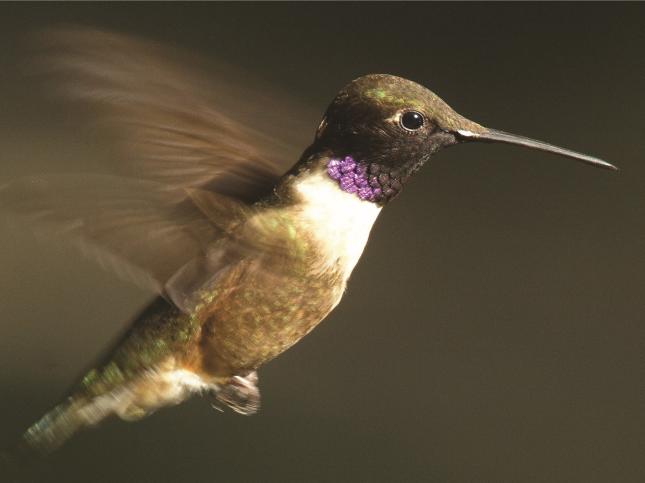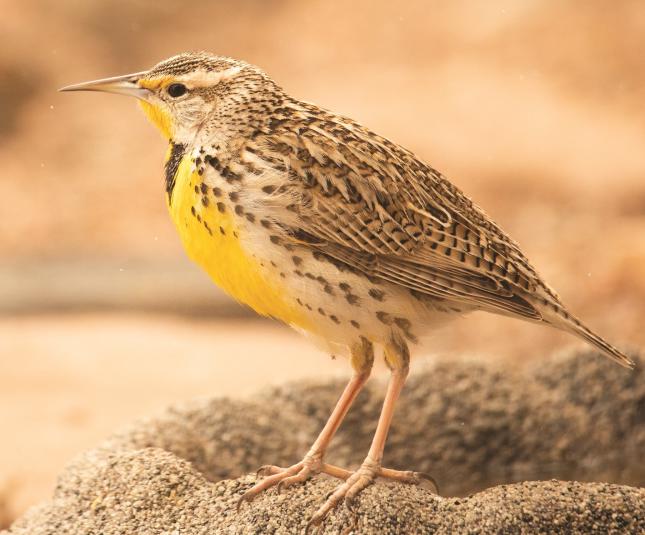April: Misdirected Migrants
 April is a month for surprises, and we don't mean April fool. This is the month when new or unusual birds are likely to show up at your feeders. Sometimes birds migrating up the mountain cordillera from Central America take a left turn rather than a right one at about the U.S. border and end up in Southern California. American Redstarts are common east of the Rockies, but rare here. That's why a sighting of one at Holmby Park in Beverly Hills has bird watchers out to see it. Malibu Lagoon, soon to be more accessible as PCH opens, has been hosting a Baird's Sandpiper since early April. These and other sightings of rare birds can be seen at the LA Audubon web site's Rare-Bird Blog.
April is a month for surprises, and we don't mean April fool. This is the month when new or unusual birds are likely to show up at your feeders. Sometimes birds migrating up the mountain cordillera from Central America take a left turn rather than a right one at about the U.S. border and end up in Southern California. American Redstarts are common east of the Rockies, but rare here. That's why a sighting of one at Holmby Park in Beverly Hills has bird watchers out to see it. Malibu Lagoon, soon to be more accessible as PCH opens, has been hosting a Baird's Sandpiper since early April. These and other sightings of rare birds can be seen at the LA Audubon web site's Rare-Bird Blog.
Left: A Black-Chinned Hummingbird makes a surprise visit to LA
If you're canyon hiking in the Santa Monica Mountains, you might see one of our few migrating hummingbirds, the Black-Chinned Hummers. Males are black or dark green with a white collar at the throat, while females are grayish with buff on their flanks. The the bright violet on the male's throats shows up only in bright light. Black-Chinneds usually live in Mexico's Sierra Madre but occasionally migrate up here to breed in well-watered locations, such as canyons or suburban back yards. So, you might see one at your nectar feeder.

An outing to a different kind of habitat in the mountains, open fields, could reward you with the sight of a Western Meadowlark, a sweet singer in the spring. The bright-yellow throat contrasts with a distinctive “necklace” of black feathers at its throat. They used to be common breeders at the coast, but urbanization has greatly reduced the open grassland where they breed. You might see them again in fall and winter, when they come to the warmer coast for food.
Right: A Western Meadowlark perched in a sandy meadow

Left: A female Bullock's Oriole looks for a full nectar feeder
Orioles, the show birds of the spring, show up in great numbers. Bullock's Orioles join the Hooded Orioles, who likely already are here. The Bullock's are bright orange with black wings and a prominent black stripe through the eye. Like their hooded cousins, the Bullock's are attracted by tall trees, especially palms, as nesting locations, and eucalyptus trees for the nectar from the flowers. An orange oriole feeder and some sweet berry jelly also could entice them to settle down in your yard.
Though they might not show up at Capistrano as regularly as in the past, Tree Swallows now are regulars closer to the Westside at Ballona Wetlands. Their numbers have been boosted by efforts to set up nesting boxes on poles within the wetlands. Available nesting sites are key to building the population of Tree Swallows. The effort has been led by Friends of Ballona Wetlands, which is now accepting bids for its annual fundraiser, which includes first-class airfare to any destination in North America.

